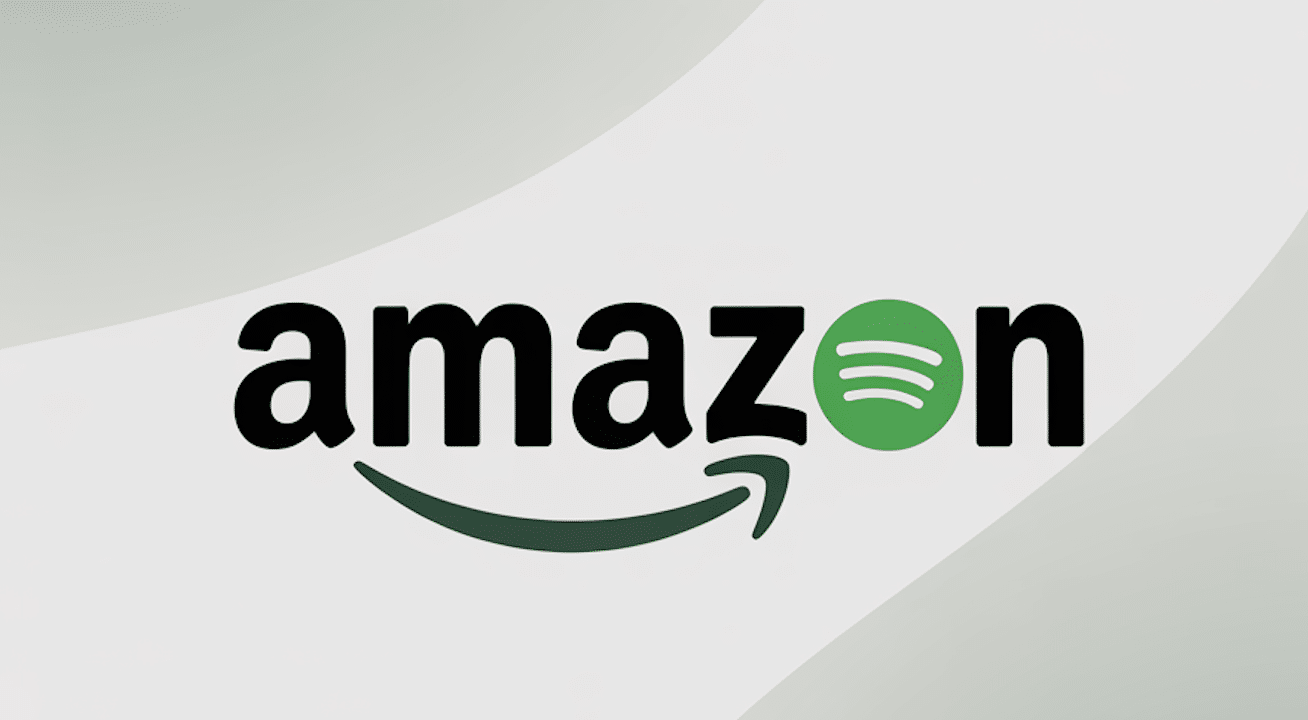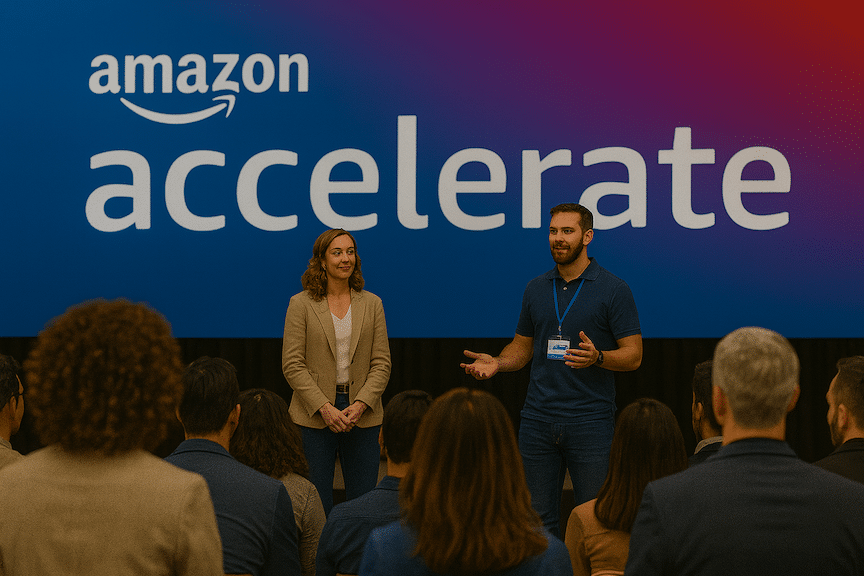Amazon’s Big FBA Change: The Hidden Opportunity a Lot of Sellers Will Miss
Why Amazon’s decision to stop prep and labeling services creates big opportunities for sellers who act fast!

Amazon just announced they’re stopping their FBA prep and labeling services in the United States on January 1, 2026. This is big news that will separate prepared sellers from those caught off-guard.
Here’s what we’re seeing with our partners: sellers who get ahead of this change are using it to beat their competition while others scramble for solutions. Based on our experience managing over $3.21 billion in revenue for partners who’ve achieved an average 84% year-over-year profit increase, big changes like this always reward sellers who move fast and think smart.
The sellers who do well through this change will be those who understand that Amazon’s decision means they need to take more control of their prep work. This might actually help you save money and improve quality in the long run.
Our team of former Amazonians has seen this before: when Amazon removes services that many sellers depend on, it creates chances for smarter sellers to gain ground while less prepared competitors struggle.
Ready to Start Growing Your Amazon Brand?
Canopy’s Partners Achieve an Average 84% Profit Increase!
Find out moreWhat This Really Means for Your Business
Amazon stopping their prep and labeling services affects more than just how you get your products ready. It touches everything from your costs to your timing to how you run your business day-to-day.
What Changes Right Away
If you’ve been using Amazon to label your products, wrap them in plastic, or bundle items together, you’ll need to find new ways to do this work. You have less than two years to completely change how you prep your inventory before sending it to Amazon.
The biggest immediate problem is timing. You’ll now need to add extra steps before shipping to FBA centers, which could slow things down and require better planning. If the prep work isn’t up to their standards, Amazon might reject your inventory, charge you disposal fees, or delay your products during busy selling seasons.
How Your Costs Will Change
While Amazon’s prep services were convenient, they weren’t always the cheapest option. This change forces you to look at your real costs and maybe find better alternatives.
Sellers who really dig into their numbers often find that prep centers or doing it themselves can give them better quality and lower costs than Amazon’s standard services. But you’ll need to invest upfront in new relationships, quality systems, and maybe equipment.
How much this costs depends on your products, how many you sell, and what prep work they need. Sellers with simple, standard products might not see big cost increases, while those with complex packaging needs might face bigger changes.
Taking Responsibility for Quality
Amazon’s decision means you’re now completely responsible for getting prep and labeling right. While this adds responsibility, it also lets you set higher quality standards and create better processes than Amazon’s one-size-fits-all approach.
You’ll need to make sure barcodes are correct, fragile items are packaged right, products that need plastic bags are handled properly, and everything meets Amazon’s rules. You’ll need good quality control to avoid costly mistakes that could get your account suspended or cause inventory problems.
How to Turn This Into an Advantage
Smart sellers approach this change by using it to build stronger, more reliable operations that give them long-term advantages over competitors. Our approach helps partners turn operational challenges into business improvements.
Step 1: Figure Out What You Need (Do This Now)
Start by making a complete list of what prep and labeling work each of your products needs. This should include specific requirements, current costs, quality standards, and ways you could improve.
We help partners look at their entire product catalog to understand how complex prep work is, how much volume they have, and how things change during busy seasons. This shows which products need special handling and which could use standard processes.
You also need to look at what you can currently do in-house, identify where you need help, and decide whether doing prep yourself or working with outside companies makes more sense based on your volume, complexity, and growth plans.
Step 2: Find and Choose the Right Partners
Picking the right prep partners means looking at more than just basic services. The most successful sellers work with partners who can grow with them, maintain good quality, and provide advantages through location, technology, or special skills.
The best prep center relationships go beyond just getting work done to become partnerships that improve your whole supply chain. This includes partners who can provide extra services like inventory management, better quality control, or faster processing.
Location matters a lot, especially if you’re shipping from overseas suppliers. Prep centers near major ports or with good relationships with freight companies can cut down transit times and costs while making inventory flow more predictable.
Step 3: Improve Your Processes and Quality
This change gives you a chance to create better quality control and efficiency than Amazon’s standard approach. Smart sellers use this change to beat competitors through better packaging, improved presentation, and stronger quality control.
Canopy Management helps partners develop detailed step-by-step procedures that ensure consistent quality while staying efficient. This includes detailed specifications for packaging, labeling, and quality checks that often go beyond Amazon’s minimum requirements.
Advanced sellers use technology for inventory tracking, quality monitoring, and process improvement that gives them better visibility and control than Amazon’s mysterious approach allowed.

How to Keep Costs Under Control
The most successful sellers approach prep cost changes smartly, viewing them as investments in controlling their operations and beating competitors rather than just extra expenses.
Use Your Volume to Get Better Deals
Sellers who move a lot of products can use their buying power to negotiate better rates with prep centers or suppliers. This often means promising certain volume levels in exchange for better pricing or enhanced services.
Working closely with prep centers can also give you access to shared resources, bulk buying power for packaging materials, and priority processing during busy seasons.
Invest in Technology and Equipment
For sellers with enough volume and complexity, investing in internal equipment or specialized tools can provide long-term cost advantages while improving quality control. This includes labeling systems, packaging equipment, and inventory management technology.
Whether to do things in-house or outsource depends on your volume, product complexity, available money, and business priorities. We help partners evaluate these trade-offs to determine the best approach for their specific situation.
Technology investments should be evaluated based on total costs over time, ability to scale, and business value rather than just upfront costs.
Building a Stronger Supply Chain
Moving away from Amazon’s prep services gives you a chance to build more reliable supply chain operations that reduce dependence on any single provider while improving overall flexibility.
Don’t Put All Your Eggs in One Basket
Clever sellers avoid creating new weak points by developing relationships with multiple prep providers or building hybrid capabilities that combine in-house and outsourced work.
Having multiple options provides backup during busy seasons, quality issues, or capacity problems while letting you optimize costs by sending different product types to the most appropriate prep method.
Having prep centers in different locations can also provide advantages by reducing shipping costs and transit times while giving you flexibility to respond to supply chain disruptions.
Build Strong Quality Control Systems
Creating solid quality control systems lets you maintain consistent standards while reducing the risk of compliance issues that could disrupt inventory flow or cause account problems.
Concentrate on building process frameworks that include checking incoming products, monitoring processes, and final quality checks that ensure compliance while identifying ways to improve.
Documentation and tracking systems provide visibility into quality trends and enable continuous improvement while maintaining accountability for compliance requirements.
Planning for Long-Term Success
The most successful sellers use this transition to build long-term advantages that go beyond just replacing prep services. This includes developing capabilities that improve overall efficiency and market position.
Running Your Business Better Than Competitors
Sellers who develop superior prep and fulfillment operations gain advantages through faster inventory turns, better quality control, and lower operational costs. These advantages build over time as running your business well enables more competitive pricing, better customer experience, and improved profitability.
The goal goes beyond replacing Amazon’s services to building operations that make you stand out and provide sustainable competitive advantages.
Capture Market Share While Competitors Struggle
Sellers who navigate this transition successfully while competitors struggle will have opportunities to capture market share through better inventory availability, competitive pricing, and superior operational reliability.
The transition period creates temporary advantages for prepared sellers as less organized competitors deal with supply chain disruptions, quality issues, or cost increases that affect their ability to compete effectively.
These opportunities are particularly significant in competitive categories where running your business well and being reliable can differentiate otherwise similar products.
Ready to Start Growing Your Amazon Brand?
Canopy’s Partners Achieve an Average 84% Profit Increase!
Find out moreYour Timeline and Key Milestones
Success requires systematic implementation with clear milestones and backup planning to ensure smooth transition before the January 1, 2026 deadline.
What to Do Right Now
Complete a full review of all your prep requirements, start evaluating vendors, and set budget parameters for transition costs. This includes identifying products with complex prep needs and evaluating your current cost structures.
Start building relationships with potential prep partners and begin testing processes with trial shipments to identify potential issues before handling all your inventory.
(Next 3 Months)
Finalize your main prep partnerships, complete process documentation, and begin transitioning less critical inventory to new preparation methods. This gives you time to identify and fix issues before handling your most important inventory.
Implement quality control systems and establish performance metrics to ensure consistent service levels and compliance standards.
Complete transition for all inventory types, establish backup partnerships for peak season capacity, and optimize processes based on initial experience. This timeline provides a buffer for unexpected challenges while ensuring readiness well before the deadline.
How Canopy Management Can Help: Your Partner for Success
The Amazon FBA prep service transition requires supply chain expertise and smart planning that many sellers struggle to develop on their own. Our human-led, software-driven approach combines deep operational knowledge with strategic thinking to help partners turn this transition into competitive advantage.
Our Custom Brand Plan™ approach ensures that fulfillment transitions align seamlessly with broader growth strategies while building operational capabilities that support long-term competitive positioning. We treat your business like our own, focusing on solutions that deliver immediate operational success while positioning you for sustained marketplace leadership.
Ready to turn Amazon’s FBA prep changes into competitive advantage? Let’s talk about developing a comprehensive fulfillment strategy that ensures smooth transition while building strategic operational capabilities that help you win.
Frequently Asked Questions
Q: How much should I budget for moving away from Amazon’s prep services?
A: Costs vary a lot based on how complex your products are and how many you sell, but most sellers should budget 15-30% above current Amazon prep costs initially, with potential to save money over 6-12 months. We help partners do detailed cost analyses to set realistic budgets and find ways to optimize.
Q: Should I do prep work myself or use outside services?
A: It depends on your volume, product complexity, available money, and business priorities. Generally, sellers with consistent monthly volumes above $100K and standard products benefit from doing it in-house, while those with complex or seasonal products often prefer outside partnerships.
Q: How do I make sure my prep work meets Amazon’s requirements without Amazon checking it?
A: Develop detailed step-by-step procedures, implement quality control checkpoints, and work with experienced prep partners who understand Amazon’s requirements. We help partners establish compliance frameworks that exceed Amazon’s minimum standards while staying efficient.
Q: What happens if my prep partner fails during busy season?
A: Successful sellers develop backup partnerships and maintain some internal capabilities for critical situations. We recommend establishing relationships with multiple prep providers and maintaining emergency procedures for high-priority inventory.
Q: Will this change affect my Buy Box performance or search rankings?
A: Proper prep compliance shouldn’t affect Buy Box or rankings directly, but prep delays or compliance issues could impact inventory availability and sales velocity. The key is ensuring smooth inventory flow and maintaining high service standards throughout the transition.
Q: How can I use this transition to beat my competition?
A: Focus on building better quality control, faster processing times, and lower costs than competitors. Many sellers discover that moving away from Amazon’s standard approach lets them improve packaging quality and reduce overall fulfillment costs.
Q: What’s the biggest mistake sellers make during this transition?
A: Waiting too long to start and not thoroughly testing new prep methods before the deadline. We recommend beginning transition planning immediately and doing extensive testing with non-critical inventory before handling high-volume products.
Q: How do I maintain quality control across multiple prep locations?
A: Implement standardized procedures, regular quality audits, and performance metrics across all prep partners. Technology solutions can provide visibility into quality trends and enable consistent standards regardless of prep location.
Canopy Management is a full-service marketing agency for Amazon, Walmart, and TikTok sellers. Our team consists of multi-million dollar, omni-channel entrepreneurs, industry leaders, and award-winning experts.
Ready to Start Growing Your Amazon Brand?
Canopy’s Partners Achieve an Average 84% Profit Increase!
Find out more

